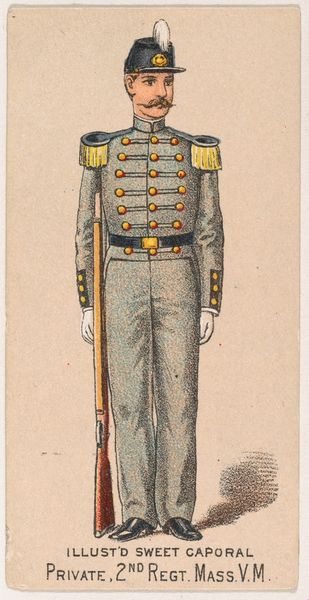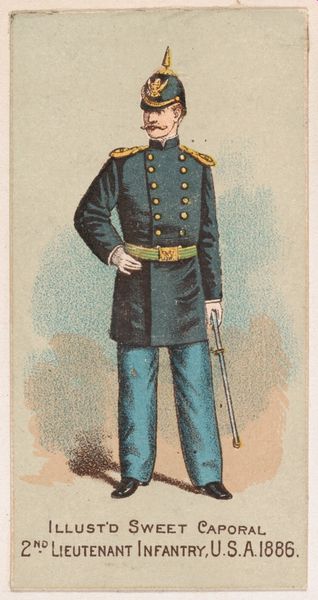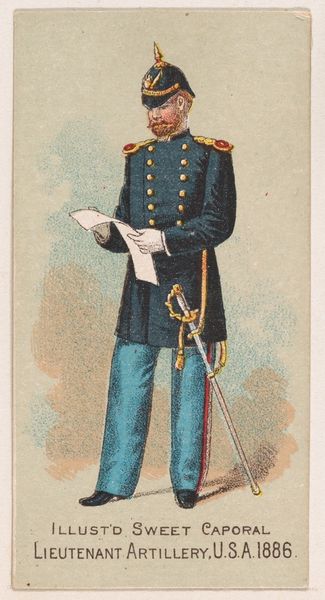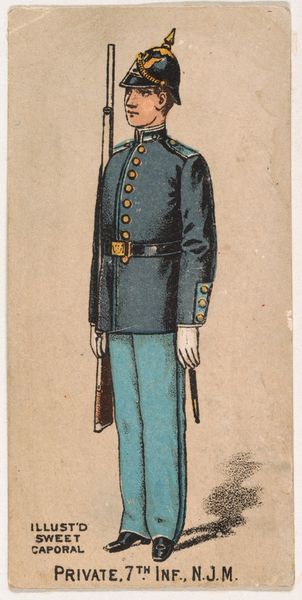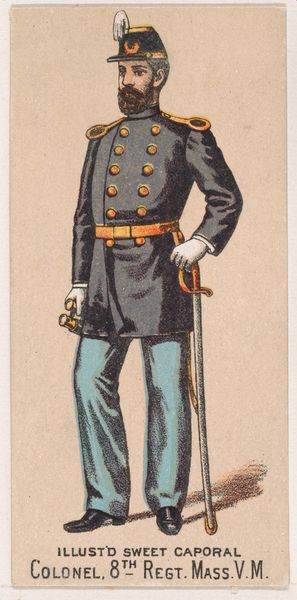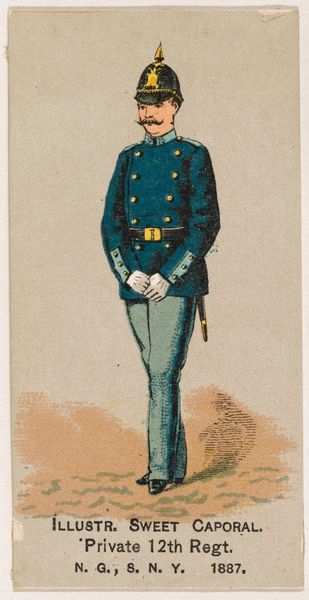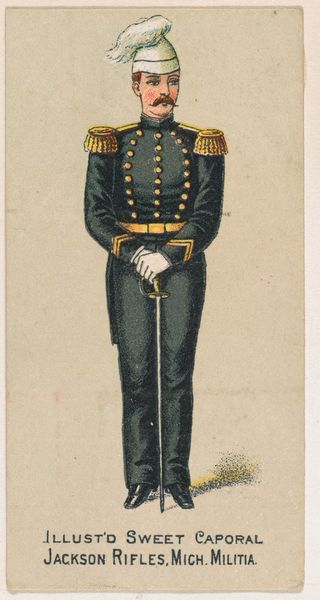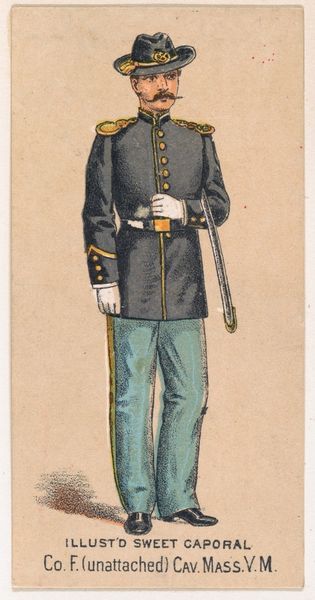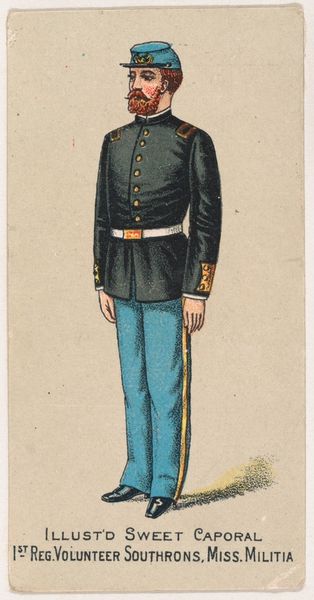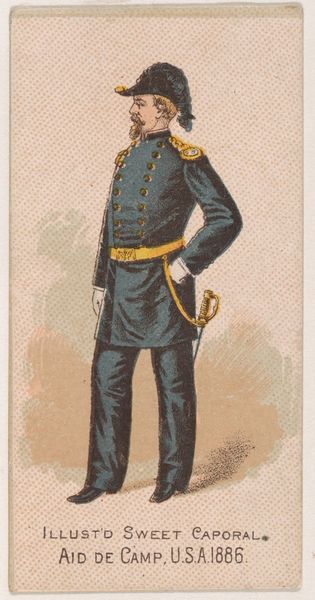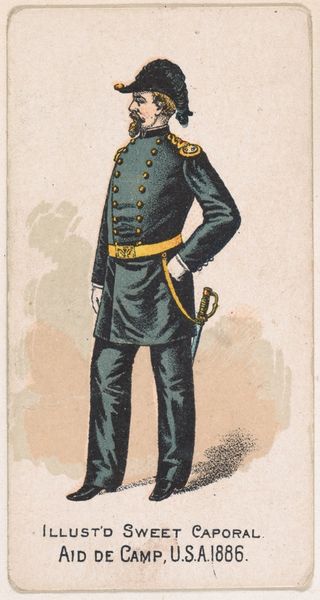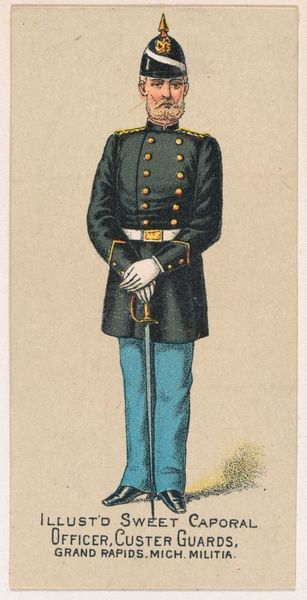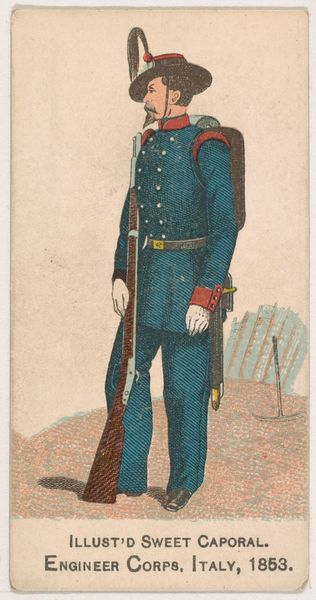
Portret van twee (vermoedelijk) Turkse militairen, staand bij een tafel met fez c. 1879 - 1900
0:00
0:00
photography
#
portrait
#
african-art
#
photography
#
historical photography
#
historical fashion
#
19th century
#
islamic-art
#
genre-painting
#
realism
Dimensions: height 98 mm, width 60 mm
Copyright: Rijks Museum: Open Domain
Curator: What a striking sepia-toned photograph! This is believed to be a portrait of two Turkish soldiers, dating roughly between 1879 and 1900, taken by Nicolas Andriomenos. Editor: It feels like looking through a keyhole into another era. The light and shadows seem to hold their breath, especially around their fezzes! What materials were common in photography then? Curator: Well, the photographic process at this time likely involved albumen prints, where the image is developed on paper coated with egg white to create that distinctive sheen. And I find the soldiers' uniforms fascinating, look closely! Their tunics and the cut of their trousers probably come from mass produced wool fabric from factories— textiles powered by steam were very modern technologies back then. Editor: That makes you wonder about the unseen labor embedded in their tailored attire! Considering photography's role at that time, this photo functions almost like a status symbol, don’t you think? Curator: Absolutely. Photographic portraits were becoming increasingly accessible to the middle class but still conveyed a certain level of sophistication. The very act of commissioning a photographer reflected economic status. They almost appear suspended between tradition and modernity, caught in time through photographic alchemy. The detail and sharp focus that photography brings makes them stand apart from traditional portraits. Editor: The table almost serves as a material witness too, its ornament mirroring a particular industrial design. One feels invited to ponder about furniture production from this period in history, beyond its aesthetics. Curator: You're right, there is much here beyond mere aesthetics. The image invites us to contemplate not only individual identity but also the larger networks of manufacturing, the spread of photography as a trade, the relationship between craft and industry in 19th century Ottoman society. Editor: It is really impressive to think of what sort of narratives are revealed in a seemingly "simple" photograph! Thanks for shedding light upon it. Curator: My pleasure. Every encounter like this lets the picture tell its thousand word story.
Comments
No comments
Be the first to comment and join the conversation on the ultimate creative platform.
